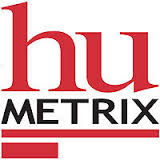FHIR
See the following -
Humana And Microsoft Announce Multiyear Strategic Partnership To Reimagine Health For Aging Populations And Their Care Teams
 On Monday, Humana and Microsoft Corp. announced a strategic partnership focused on building modern health care solutions for Humana members aimed at improving their health outcomes and making their health care experiences simpler to navigate. Using the power of Microsoft's Azure cloud, Azure AI, and Microsoft 365 collaboration technologies, as well as interoperability standards like FHIR, Humana will develop predictive solutions and intelligent automation to improve its members' care by providing care teams with real-time access to information through a secure and trusted cloud platform.
On Monday, Humana and Microsoft Corp. announced a strategic partnership focused on building modern health care solutions for Humana members aimed at improving their health outcomes and making their health care experiences simpler to navigate. Using the power of Microsoft's Azure cloud, Azure AI, and Microsoft 365 collaboration technologies, as well as interoperability standards like FHIR, Humana will develop predictive solutions and intelligent automation to improve its members' care by providing care teams with real-time access to information through a secure and trusted cloud platform.
- Login to post comments
Humetrix to Unveil Medicare Blue Button FHIR API Enabled iBlueButton Mobile Platform at HIMSS18
 At HIMSS March 5-8, Humetrix is proud to be part of the Centers for Medicare and Medicaid Services (CMS) Blue Button® API program launch to enable Medicare beneficiaries to connect their Medicare claims data to the applications, services, and research programs they trust. Three-time award winner of the ONC Investing in Innovation competition for Blue Button, Humetrix has been a fierce advocate and a Blue Button technology industry leader from the start, providing Veterans, TRICARE and Medicare beneficiaries mobile access to their Blue Button data with the iBlueButton mobile platform.
At HIMSS March 5-8, Humetrix is proud to be part of the Centers for Medicare and Medicaid Services (CMS) Blue Button® API program launch to enable Medicare beneficiaries to connect their Medicare claims data to the applications, services, and research programs they trust. Three-time award winner of the ONC Investing in Innovation competition for Blue Button, Humetrix has been a fierce advocate and a Blue Button technology industry leader from the start, providing Veterans, TRICARE and Medicare beneficiaries mobile access to their Blue Button data with the iBlueButton mobile platform.
- Login to post comments
Looking Back At A 2014: Thermidor For Health Care Reform?
As money drains out of health care reform, there are indications that the impetus for change is receding as well...
- Login to post comments
Low-cost Aplication Platforms (LCAP): What They Should Mean to Public Health
 Agency budgets continue to run tight, while the demands for data modernization continue to escalate. We are also seeing weakening markets – not strengthening markets – for core public health software systems like Immunization Information Systems (IIS) and Disease Surveillance/case management systems. One of the emerging, promising approaches are Low-cost Application Platforms (LCAP). What exactly are they, where did they come from, and are they a useful strategy for developing core public health applications?
Agency budgets continue to run tight, while the demands for data modernization continue to escalate. We are also seeing weakening markets – not strengthening markets – for core public health software systems like Immunization Information Systems (IIS) and Disease Surveillance/case management systems. One of the emerging, promising approaches are Low-cost Application Platforms (LCAP). What exactly are they, where did they come from, and are they a useful strategy for developing core public health applications?
- Login to post comments
Major German research project chooses openEHR
 I just returned from Heidelberg, where another very successful ‘openEHR day’ was held, this time by the HiGHmed research consortium, with 100 attendees. HiGHmed is funded with 20m€ by the German Federal Ministry of Education and Research (BMBF) under the “Medical Informatics” funding scheme, and has as its goal..... to develop and use innovative information infrastructures to increase the efficiency of clinical research and to swiftly translate research results into validated improvements of patient care...
I just returned from Heidelberg, where another very successful ‘openEHR day’ was held, this time by the HiGHmed research consortium, with 100 attendees. HiGHmed is funded with 20m€ by the German Federal Ministry of Education and Research (BMBF) under the “Medical Informatics” funding scheme, and has as its goal..... to develop and use innovative information infrastructures to increase the efficiency of clinical research and to swiftly translate research results into validated improvements of patient care...
- Login to post comments
Microsoft, Amazon, Google, IBM, Oracle, and Salesforce Issue Joint Statement Making Commitment to Open Source Healthcare Interoperability
 Interoperability is an overlapping set of technical and policy challenges, from data access to common data models to information exchange to workflow integration – and these challenges often pose a barrier to healthcare innovation. Microsoft has been engaged for many years on developing best practices for interoperability across industries. Today, as health IT community leaders get together at the CMS Blue Button 2.0 Developer Conference here in Washington, DC, we’re pleased to announce that Microsoft has joined with Amazon, Google, IBM, Oracle, and Salesforce in support of healthcare interoperability...
Interoperability is an overlapping set of technical and policy challenges, from data access to common data models to information exchange to workflow integration – and these challenges often pose a barrier to healthcare innovation. Microsoft has been engaged for many years on developing best practices for interoperability across industries. Today, as health IT community leaders get together at the CMS Blue Button 2.0 Developer Conference here in Washington, DC, we’re pleased to announce that Microsoft has joined with Amazon, Google, IBM, Oracle, and Salesforce in support of healthcare interoperability...
- Login to post comments
National Patient Identifier with FHIR is the answer
 Direct Secure messaging has been implemented across the country by many physicians and hospitals due to ONC Meaningful Use requirements. Direct is great for clinician to patient interaction or even consults in some cases. Is this really the way that we should be sharing patient information? Ideally, we want the information in the patient record not just between two clinicians out of band and not stored in the patient history. This way anyone entering later in the patient care scenario has access to the information should it become necessary and the patient has also consented to the release. Read More »
Direct Secure messaging has been implemented across the country by many physicians and hospitals due to ONC Meaningful Use requirements. Direct is great for clinician to patient interaction or even consults in some cases. Is this really the way that we should be sharing patient information? Ideally, we want the information in the patient record not just between two clinicians out of band and not stored in the patient history. This way anyone entering later in the patient care scenario has access to the information should it become necessary and the patient has also consented to the release. Read More »
- Login to post comments
Navigating between Heavy-weight and Light-weight Standardization
 Andy Oram
Andy Oram
FHIR is large and far-reaching but deliberately open-ended. Many details are expected tovary from country to country and industry to industry, and thus are left up to extensions that various players will design later. It is precisely in the extensions that the risk lurks of reproducing the Tower of Babel that exists in other health care standards. The reason the industry have good hopes for success this time is the unusual way in which the Argonaut project was limited in both time and scope. It was not supposed to cover the entire health field, as standards such as the International Classification of Diseases (ICD) try to do. It would instead harmonize the 90% of cases seen most often in the US. For instance, instead of specifying a standard of 10,000 codes, it might pick out the 500 that the doctor is most likely to see.
- Login to post comments
Navigation Between Heavy-weight and Light-weight Standardization (Part 2)

The previous section of this article laid out the context for HL7 FHIR standard and the Argonaut project; now we can look at the current status.Tripathi portrays the Argonaut process as radically different from HL7 norms. HL7 hasestablished its leading role in health standards by following the rules of the American National Standards Institute (ANSI) in the US, and similar bodies set up in other countries where HL7 operates. These come from the pre-Internet era and emphasize ponderous, procedure-laden formalities. Meetings must be held, drafts circulated, comments explicitly reconciled, ballots taken. Historically this has ensured that large industries play fair and hear through all objections, but the process is slow and frustrates smaller actors who may have good ideas but lack the resources to participate.
- Login to post comments
ONC Releases Final Rule on Interoperability: How Might it Affect Public Health?
 On March 9, 2020 the Office of the National Coordinator for Health Information Technology (ONC) released its final rule on the 21st Century Cures Act: Interoperability, Information Blocking, and the ONC Health IT Certification Program. Referred to by some people as the "Information Blocking Rule," since this is the primary topic, the document actually covers a host of other issues related to interoperability driven primarily by requirements of the 21st Century Cures Act. In addition to the final rule itself you can read the ONC press release, a comparison between the proposed and final rules, and lots of other resources.
On March 9, 2020 the Office of the National Coordinator for Health Information Technology (ONC) released its final rule on the 21st Century Cures Act: Interoperability, Information Blocking, and the ONC Health IT Certification Program. Referred to by some people as the "Information Blocking Rule," since this is the primary topic, the document actually covers a host of other issues related to interoperability driven primarily by requirements of the 21st Century Cures Act. In addition to the final rule itself you can read the ONC press release, a comparison between the proposed and final rules, and lots of other resources.
- Login to post comments
ONC Releases New NPRM on Interoperability: How Might it Affect Public Health?
 On February 11, 2019, the Office of the National Coordinator for Health Information Technology (ONC) released its latest Notice of Proposed Rulemaking (NPRM) to Improve the Interoperability of Health Information. Referred to by some people as the "Information Blocking NPRM," since this was the primary topic anticipated, the document actually covers a host of other topics related to interoperability driven primarily by requirements of the 21st Century Cures Act. Besides the initial text of the NPRM, ONC also released a set of summary slides and fact sheets to help explain the document.
On February 11, 2019, the Office of the National Coordinator for Health Information Technology (ONC) released its latest Notice of Proposed Rulemaking (NPRM) to Improve the Interoperability of Health Information. Referred to by some people as the "Information Blocking NPRM," since this was the primary topic anticipated, the document actually covers a host of other topics related to interoperability driven primarily by requirements of the 21st Century Cures Act. Besides the initial text of the NPRM, ONC also released a set of summary slides and fact sheets to help explain the document.
- Login to post comments
ONC's 3rd Interoperability Forum: Not Much to Report
 On August 21 and 22, 2019 the Office of the National Coordinator for Health Information Technology (ONC) held its third Interoperability Forum in Washington, DC. More than 600 individuals participated in person with many others viewing the general sessions via webinar. The conference began and ended with half-day plenary sessions while providing five tracks with smaller sessions in between. I attended the Health Information Exchange (HIE)/Community-based Information Exchange (CIE) breakout session on both days. The plenaries...focused on the current state and the future state of interoperability.
On August 21 and 22, 2019 the Office of the National Coordinator for Health Information Technology (ONC) held its third Interoperability Forum in Washington, DC. More than 600 individuals participated in person with many others viewing the general sessions via webinar. The conference began and ended with half-day plenary sessions while providing five tracks with smaller sessions in between. I attended the Health Information Exchange (HIE)/Community-based Information Exchange (CIE) breakout session on both days. The plenaries...focused on the current state and the future state of interoperability.
ONC's Efforts to Advance Worldwide Digital Health - The Global Digital Health Partnership White Papers
 As the world responds to the COVID-19 pandemic, we continue to see how digital health plays a vital role in care delivery. ONC recognizes the importance of advancing digital health at domestic and global levels. As discussed in a previous blog post, part of ONC's global engagement includes representing the United States in the Global Digital Health Partnership (GDHP). The GDHP currently runs five work streams: Interoperability, Clinical and Consumer Engagement, Cyber Security, Evidence and Evaluation, and Policy Environments.
As the world responds to the COVID-19 pandemic, we continue to see how digital health plays a vital role in care delivery. ONC recognizes the importance of advancing digital health at domestic and global levels. As discussed in a previous blog post, part of ONC's global engagement includes representing the United States in the Global Digital Health Partnership (GDHP). The GDHP currently runs five work streams: Interoperability, Clinical and Consumer Engagement, Cyber Security, Evidence and Evaluation, and Policy Environments.
- Login to post comments
Open Health Guide to HIMSS19
 The annual gargantuan HIMSS conference is back in Orlando with over 45,000 participants from more than 90 countries. There will be more than 1,300 vendors at the exhibit floor and more than 300 educational sessions. As with the last several conferences, the focus on open source as the key underlying technologies of health information technologies continues to increase. In previous conferences, we have seen the rise of open source technologies, in particular, those related to interoperability such as FHIR and Blockchain. A large number of sessions at HIMSS19 will be focused on another set of technologies powered largely by open source software and design principles such as artificial intelligence (AI), machine learning, and natural language processing.
The annual gargantuan HIMSS conference is back in Orlando with over 45,000 participants from more than 90 countries. There will be more than 1,300 vendors at the exhibit floor and more than 300 educational sessions. As with the last several conferences, the focus on open source as the key underlying technologies of health information technologies continues to increase. In previous conferences, we have seen the rise of open source technologies, in particular, those related to interoperability such as FHIR and Blockchain. A large number of sessions at HIMSS19 will be focused on another set of technologies powered largely by open source software and design principles such as artificial intelligence (AI), machine learning, and natural language processing.
- The Future Is Open
- Login to post comments
